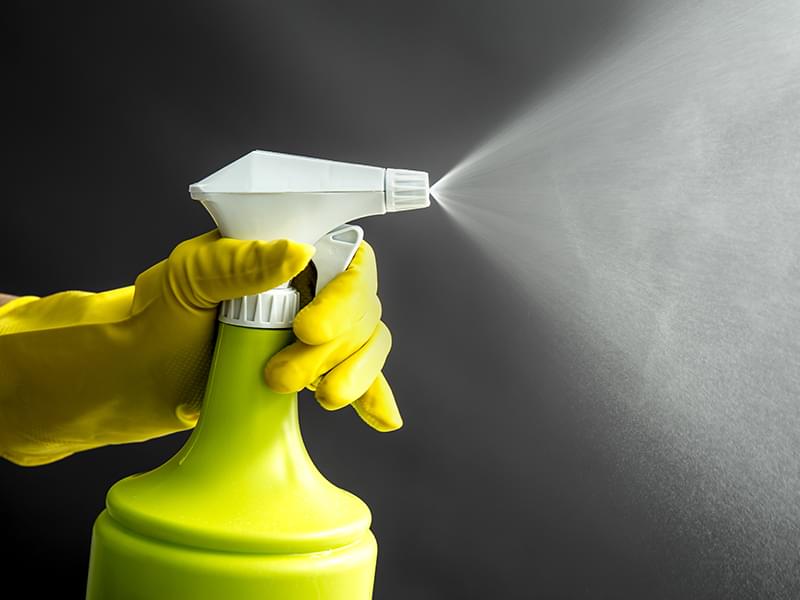LEATHERHEAD, Surrey, UK and AKRON, Ohio, USA – February, 02 2021 – Demand for green or environmentally sustainable cleaning is rising for use both in the home and institutions, and will accelerate despite the challenge of responding to the COVID-19 pandemic new research concludes.
The Future of Sustainable Cleaning Products to 2026
Data from the newly published Smithers study
The Future of Sustainable Cleaning Products to 2026 finds that in 2021 total value for environmentally friendly laundry, surface care, dishwashing, bath & shower goods will reach $72.9 billion in retail value. A forecast compound annual growth rate (CAGR) of 8.5% will drive the market to $109.7 billion in 2026.
This contrasts with an overall market growth for all cleaning products of 4.1%, from $169.9 billion to $207.3 billion across 2021-2026.
Cleaning products have been prioritised in 2020 to combat the virus. This has only restrained temporarily the longer industry trend to reduce their impact on the environment. New products are being developed and marketed on their green credentials, even as homecare sales surge; and leading companies are making solid corporate commitments to cut their carbon footprint.
Smithers’ analysis of 18 detergent ingredients finds that demand will grow fastest for sustainable, surfactants, solvents and polymers. R&D will power much of the future transformation, with multiple challenges still to overcome. The leading ones are:
- Finding a cost-effective alternative to linear alkyl benzene sulfonate (LAS)
- Lowering the impact of non-ionic surfactants with the evolution of bio-based ethylene oxide, and sustainably grown palm oil
- Manufacturing cationic, amphoteric and other surfactants without synthetic chemical inputs
- Developing green alternatives to acrylic polymers
- Improving the economics of plant-based ingredients made via fermentation
- Engineering flora or microorganisms to produce branched hydrophobes with higher surface activity.
The adoption of sustainable cleaning products will be fastest in Western Europe. This will be supported by several circular economy initiatives from the EU and a rising call from consumers for products that respect the environment. President Biden’s commitments to address environmental issues will prompt similar changes in the US, once the COVID-19 threat is defeated.
In developing regions, led by Asia and the Middle East wider consumption of institutional and home care cleaners, will naturally increase volumes of sustainable detergents, as they are rolled out across global product portfolios.
For consumers sales developing more sustainable packaging is also a priority for brands. The leading four strategies being pursued are:
- Substituting away from polymer packaging where feasible
- Reducing the amount of plastics in the packaging
- Wider use of recycled plastic grades
- A wider implementation of re-use formats.
The market and technology trends for greener detergents are examined in depth in
The Future of Sustainable Cleaning Products to 2026. This is quantified with an exclusive data set segmenting the market by ingredient type, end-use application and geographic region for 2016-2026. This is contextualised further by expert analysis of the green chemistry principles, legislation and market drivers that will define a more sustainable future for the cleaning industry.
Global cleaning products market, retail value $ billion, 2016-2026
Cleaning products have been prioritised in 2020 to combat the virus. This has only restrained temporarily the longer industry trend to reduce their impact on the environment. New products are being developed and marketed on their green credentials, even as homecare sales surge; and leading companies are making solid corporate commitments to cut their carbon footprint.
Smithers’ analysis of 18 detergent ingredients finds that demand will grow fastest for sustainable, surfactants, solvents and polymers. R&D will power much of the future transformation, with multiple challenges still to overcome. The leading ones are:
- Finding a cost-effective alternative to linear alkyl benzene sulfonate (LAS)
- Lowering the impact of non-ionic surfactants with the evolution of bio-based ethylene oxide, and sustainably grown palm oil
- Manufacturing cationic, amphoteric and other surfactants without synthetic chemical inputs
- Developing green alternatives to acrylic polymers
- Improving the economics of plant-based ingredients made via fermentation
- Engineering flora or microorganisms to produce branched hydrophobes with higher surface activity.
The adoption of sustainable cleaning products will be fastest in Western Europe. This will be supported by several circular economy initiatives from the EU and a rising call from consumers for products that respect the environment. President Biden’s commitments to address environmental issues will prompt similar changes in the US, once the Covid-19 threat is defeated.
In developing regions, led by Asia and the Middle East wider consumption of institutional and home care cleaners, will naturally increase volumes of sustainable detergents, as they are rolled out across global product portfolios.
For consumers sales developing more sustainable packaging is also a priority for brands. The leading four strategies being pursued are:
- Substituting away from polymer packaging where feasible
- Reducing the amount of plastics in the packaging
- Wider use of recycled plastic grades
- A wider implementation of re-use formats.
The market and technology trends for greener detergents are examined in depth in The Future of Sustainable Cleaning Products to 2026. This is quantified with an exclusive data set segmenting the market by ingredient type, end-use application and geographic region for 2016-2026. This is contextualised further by expert analysis of the green chemistry principles, legislation and market drivers that will define a more sustainable future for the cleaning industry.
